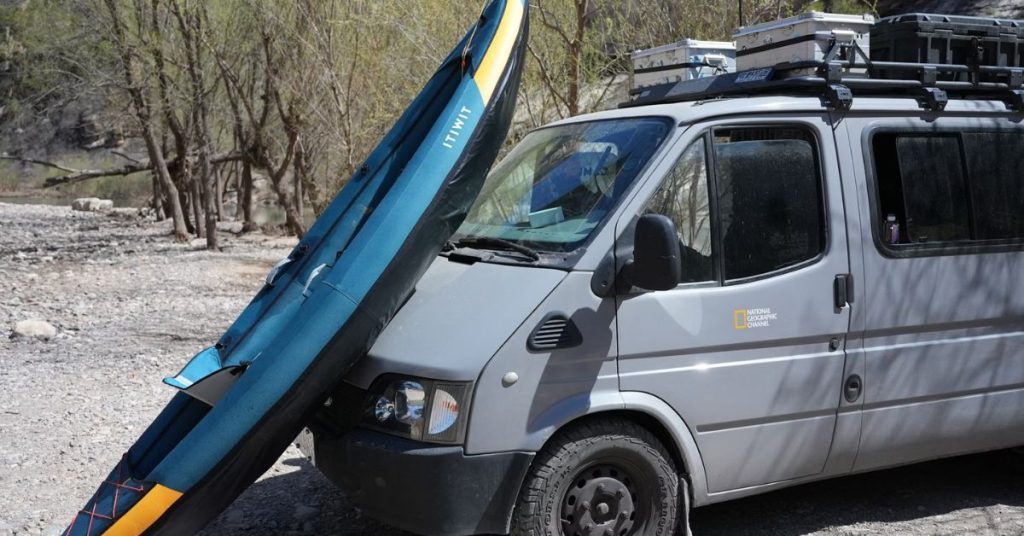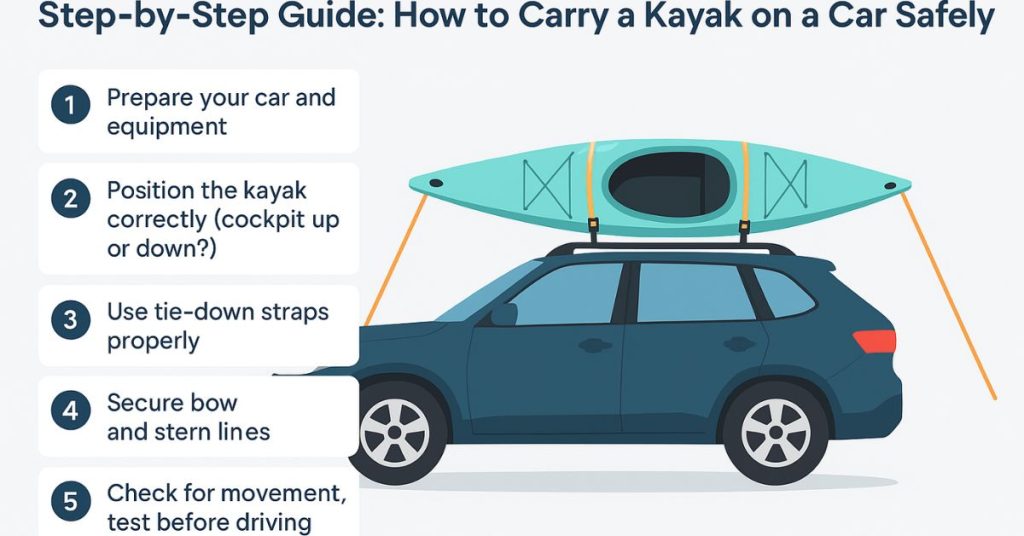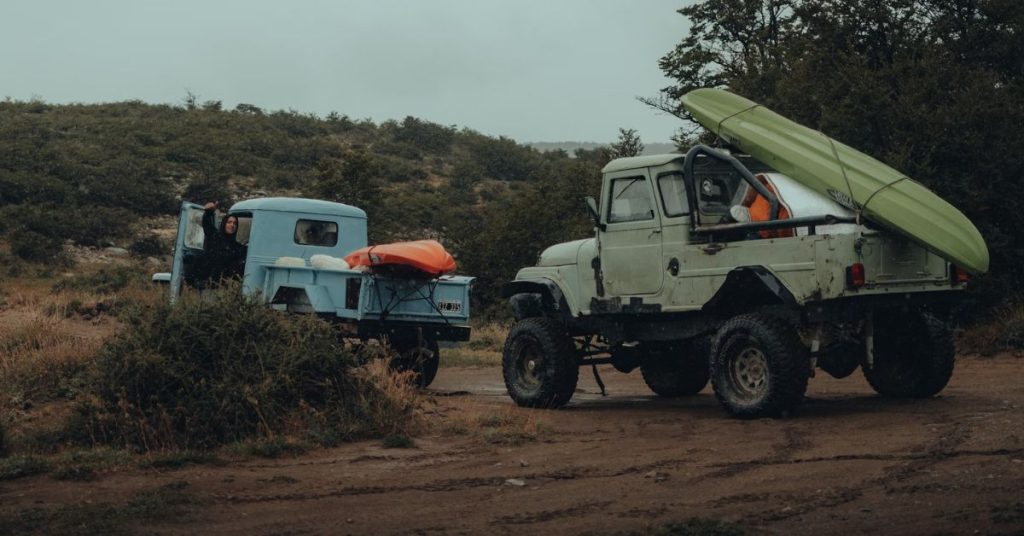How to carry a kayak on a car starts with using a secure roof rack system, durable tie-down straps, and properly securing both the bow and stern. This setup ensures your kayak remains stable during transport, protects your car from potential damage, and guarantees a safe trip to your paddling destination. If your vehicle lacks a roof rack, foam blocks or pool noodles can serve as a kayak car mount alternative—but extra care and attention are required for secure strapping.

Kayak transport tips are crucial because transporting a kayak incorrectly can lead to significant problems. Loose straps, improper positioning, or skipping the bow and stern tie-downs can cause damage to your car, kayak, or other vehicles on the road. Knowing how to carry a kayak on a car safely is vital to protect both your gear and others.
This kayak transport guide is aimed at beginners, solo paddlers, and anyone seeking a reliable, simple, and effective method to carry a kayak on a car. You’ll learn the essential gear you need, step-by-step instructions for loading and securing your kayak, and practical tips to avoid common mistakes.
Beginner’s Guide to Transporting a Kayak
I still remember the first time I tried to carry my kayak in my car. With no roof rack and just some pool noodles, I thought it would be easy. I tied it down with random ropes and hit the road, but after a few miles, I saw my kayak sliding in the rearview mirror. I pulled over just in time to avoid any damage, but that was my wake-up call.
Lesson learned: The right gear makes all the difference. Using quality tie-down straps, a roof rack system, and securing the bow and stern properly transformed my trips from stressful to smooth. Without these steps, transporting a kayak becomes a real hassle—and risky for both you and others on the road.
What I learned:
- Always use reliable straps and double-check them.
- Center the kayak for balance.
- Don’t skip bow and stern tie-downs.
What You’ll Need to Transport a Kayak on Your Car
When it comes to transporting a kayak, having the right gear can make all the difference between a smooth trip and a stressful one. Here’s a list of essential equipment you’ll need, along with the pros and cons of each method to help you choose the best option for your car and budget.
Roof Rack or Crossbars
A roof rack is the most secure option for transporting your kayak. It’s designed to hold your kayak safely on your car’s roof, and it can be customized with additional accessories like cradles or saddles.
- Pros: Secure, durable, and versatile for carrying multiple kayaks or other gear.
- Cons: Can be expensive and may require professional installation, depending on your vehicle.
Kayak Cradles, Saddles, or J-Style Racks
These kayak-specific accessories are designed to make the transport process even easier by holding the kayak securely in place. Cradles and saddles support the kayak’s hull, while J-style racks allow you to load the kayak on its side to save space.
- Pros: Adds stability and support, reduces the risk of damage to your kayak.
- Cons: May require a roof rack or crossbars to be used effectively.
Foam Pads or Pool Noodles (Budget-Friendly Setup)
If you’re on a budget or don’t want to invest in a full roof rack system, foam pads or pool noodles can be a temporary solution. These provide a cushion between your kayak and your car’s roof, helping to prevent scratches and damage.
- Pros: Affordable and easy to set up.
- Cons: Less secure than a roof rack system, and requires constant checking while driving.
Tie-Down Straps and Ratchets
A good set of tie-down straps is essential to secure your kayak to the roof. Ratchets are especially useful for tightening the straps firmly and ensuring everything stays in place while driving.
- Pros: Inexpensive, easy to use, and effective when used properly.
- Cons: Straps can be damaged if not stored properly, and it’s important to make sure they are tight enough to prevent shifting.
Bow and Stern Lines
Bow and stern tie-downs are essential for ensuring your kayak stays securely attached to your vehicle, especially during high-speed driving or on windy days. These lines connect the front and back of your kayak to your car, preventing it from shifting.
- Pros: Extra layer of security, keeps your kayak from moving.
- Cons: May not be necessary for short trips, but essential for long distances or highway driving.
With the right setup, transporting your kayak can be an easy and stress-free experience.
Cheak This Video
Step-by-Step Guide: How to Carry a Kayak on a Car Safely
Carrying a kayak on your car safely is essential for ensuring that both the kayak and your vehicle remain in top condition while you’re on the road.
Step 1: Prepare Your Car and Equipment
Before you even think about loading your kayak, make sure your car is ready. You’ll need a roof rack to safely transport your kayak. If your car doesn’t have one, you can opt for temporary roof racks or even foam blocks that can be placed on your car’s roof. Check the weight limits of your roof rack, as exceeding these limits can lead to dangerous driving conditions.
What You’ll Need:
- Roof rack or foam blocks
- Tie-down straps (preferably cam straps for ease of use)
- Bow and stern lines
- A helper (optional, but helpful)
Step 2: Position the Kayak Correctly
Now, it’s time to position your kayak. The correct orientation is key to making sure it’s stable and won’t shift during travel.
- Cockpit up or down?
Most kayaks are best placed cockpit down to minimize wind resistance. This also helps the kayak sit more securely on the roof. However, if your kayak has a fragile or rounded hull, you might want to go cockpit up to avoid pressure on any weak spots. - Even Distribution
Position the kayak so that it’s centered on the roof rack or foam blocks. This will help distribute the weight evenly and prevent any instability while driving.
Step 3: Use Tie-Down Straps Properly
The most important part of safely securing your kayak is using the right tie-down straps. Here’s how to do it:
- Start with the middle: Lay the straps over the center of your kayak and pass them through the roof rack. Use cam straps or ratchet straps to ensure the kayak is snug but not over-tightened. Over-tightening can damage the kayak.
- Secure the kayak: Tighten the straps slowly, making sure that both sides of the kayak are equally secure. The kayak should not move from side to side or up and down.
- Tie the straps off: Once your kayak is secured, make sure to tie the loose ends of the straps to prevent them from flapping in the wind.
Step 4: Secure Bow and Stern Lines
Now, you’ll need to tie down the bow (front) and stern (back) of the kayak. This is crucial because it helps to prevent the kayak from shifting forward or backward while you drive.
- Attach bow and stern lines: Use additional ropes or straps to secure the kayak’s bow and stern to your car’s front and rear bumpers. Ensure the lines are tight enough to prevent any movement but not so tight that they put excessive pressure on the kayak.
- Test the setup: Before you hit the road, give the bow and stern lines a firm tug to make sure they’re secure.
Step 5: Check for Movement and Test Before Driving
Before you drive off, it’s important to do a final check to ensure the kayak is fully secured.
- Test for movement: Give the kayak a push from different sides to see if it shifts. If it moves, adjust the straps and bow/stern lines.
- Check the straps: Make sure the straps are tight but not overly stressed. They should hold the kayak securely without damaging it.

Final Tip:
Take a short test drive at a low speed to check for any signs of movement. This will give you peace of mind before hitting the highway.
Tips for Solo Loading and Unloading a Kayak
Loading and unloading a kayak by yourself can be challenging, but with the right techniques and tools, it becomes much easier and safer.
Cheak this Video
Use of Kayak Loader Assist Tools or DIY Methods
Kayak Loader Assist Tools
Investing in a kayak loader assist tool can make a huge difference in easing the process. These tools are designed to help you lift the kayak onto your car’s roof with minimal effort. Some popular options include:
- Kayak Roof Rack Rollers: These tools let you roll the kayak onto your roof without lifting it directly.
- Lift Systems: These systems use pulleys to help lift the kayak into place.
DIY Methods
If you’re not ready to invest in specialized equipment, there are several DIY methods that can work well:
- Use a towel or blanket: Place a towel or blanket over the edge of your car’s roof. This reduces friction and helps slide the kayak up.
- DIY kayak loader: You can create a simple loader using PVC pipes. With some basic materials, you can make a device to guide the kayak up onto the roof.
Safety Precautions to Prevent Injury
Loading and unloading a kayak can strain your back, shoulders, and arms, so it’s important to follow some basic safety precautions:
- Lift with your legs, not your back: Always bend at your knees and keep your back straight to prevent strain.
- Use your body’s strength: Push the kayak up rather than lifting it completely. Using your body to roll or push can minimize effort.
- Wear protective gear: Consider wearing gloves to protect your hands from sharp edges and rough surfaces.
Gear Suggestions: Roller Attachments, Lift Systems
Roller Attachments
Roller attachments can be installed on your roof rack to help you slide the kayak into place. These systems can reduce the need for heavy lifting and make the process smoother. Look for kayak roof rollers to simplify loading.
Lift Systems
For even easier lifting, a kayak lift system can be a game-changer. These systems use a pulley mechanism to lift the kayak, providing you with more control and less strain. Consider kayak lift systems to make loading and unloading a breeze.
By using the right tools and techniques, solo loading and unloading your kayak can be both safe and efficient. Always keep safety in mind and use the tools that best fit your needs.
Kayak Transport Safety Tips: Drive Smart, Paddle Safe
Learning how to carry a kayak on a car involves more than just strapping it to the roof—it requires proper technique, the right gear, and attention to safety to ensure a smooth and secure trip.
Speed Limits When Transporting a Kayak
While there’s no specific nationwide speed limit for driving with a kayak on your roof, a good rule of thumb is to keep your speed under 65 mph (105 km/h). High speeds increase wind resistance and can cause straps to loosen or the kayak to shift.
- Check your kayak straps after driving a few miles, especially on highways.
- Avoid sudden lane changes and aggressive braking, which can cause your load to shift.
Pro Tip: Stop every 30–60 minutes on long trips to check all straps and lines.
Weather Considerations: Wind Drag, Rain, and More
Wind Drag
Kayaks are long and light, so strong winds or crosswinds can pull on the kayak and affect your steering. To minimize wind drag:
- Position the kayak cockpit-down.
- Use bow and stern lines to reduce sway and vibration.
- Keep the kayak centered on your vehicle to reduce imbalance.
Rain & Wet Conditions
Wet conditions can make the kayak slippery and may loosen straps. Always:
- Use non-stretch tie-down straps.
- Dry straps before storing to prevent mildew.
Learn more about kayak roof transport in wind and rain from REI’s Kayak Transport Tips.
How to Avoid Damaging Your Car or Kayak
- Use padding or foam blocks between the kayak and the roof to prevent scratches or dents.
- Avoid over tightening straps, which can crack plastic hulls or deform composite kayaks.
- Use car-specific kayak carriers like Thule’s Hull-A-Port XT to keep your kayak stable and your car damage-free.
- Protect paint by placing soft cloths under tie-down points on bumpers or hoods.
Legal Regulations in Different States (Flags, Overhang, Etc.)
Each U.S. state has its own rules regarding vehicle overhang and visibility flags, so it’s important to check your local laws. Generally:
- Federal DOT guidelines allow up to 4 feet of rear overhang, but some states limit it to 3 feet.
- If your kayak extends more than 4 feet past your rear bumper, you must attach a red flag (typically 12″ x 12″) during the day and a red light at night.
Common State Rules (Check official sources for your location):
- California: 4 ft rear overhang max with red flag required.
- Florida: Red flag for any load extending beyond the vehicle.
- Texas: Max 4 ft rear overhang; flag or reflector required.
Check your state’s DOT website or use this helpful guide: State Overhang Laws for Vehicles (Kayak Edition)
Final Tip: Always double-check all tie-downs before hitting the road and review your local transport laws. Safe transport means a safer adventure ahead.

Common Mistakes to Avoid When Transporting a Kayak on a Car
Knowing how to carry a kayak on a car safely is key—but just as important is understanding what not to do. Avoiding common mistakes can save your kayak, protect your car, and keep you safe on the road. Here are the top errors to watch out for and how to fix them.
Using Cheap or Weak Straps
One of the biggest mistakes is relying on low-quality straps or bungee cords. These can snap or stretch, especially at high speeds or during long drives.
What to do instead: Always use heavy-duty cam straps designed for kayak transport. They offer a secure, non-slip grip without damaging the hull.
Forgetting Bow and Stern Tie-Downs
Many paddlers secure the kayak with roof straps but skip the bow and stern lines—a major safety risk. Without these, the kayak can shift or lift in transit.
Why it matters: Front and rear tie-downs prevent the kayak from swaying or flying off in crosswinds or during sudden stops.
Solution: Use ratchet straps or rope with hooks to secure the kayak’s ends to your car’s bumpers or tow points.
Over-Tightening and Damaging the Kayak Hull
Tight is good—but too tight can warp or crack your kayak, especially if it’s a plastic or composite model.
Tip: Tighten the straps enough to hold the kayak firmly, but not so much that the hull compresses. You should be able to wiggle the kayak slightly without shifting position.
Not Checking Straps During Long Trips
Even the best tie-downs can loosen after miles of vibration and wind resistance. Failing to recheck can lead to dangerous slippage or complete load failure.
What to do: Stop every 30–60 minutes on long drives to check and retighten all straps and tie-downs.
Pro Tip: Mark your straps with a twist or tag so you can visually inspect any slack during breaks.
Frequently Asked Questions (FAQ)
Can I carry a kayak without a roof rack?
Yes, you can! Use foam blocks and cam straps to secure the kayak to your car’s roof. While it works for short trips, a roof rack is safer for long distances and highway travel.
Is it legal to drive with a kayak sticking out?
Yes, it’s legal—as long as you follow the rules. Most states allow a rear overhang of up to 4 feet, but you must attach a red flag to the end of the kayak for visibility. Some states also require lights if driving at night.
What’s the best method for small cars?
For small vehicles, J-cradle racks or foam pads work best. Make sure the kayak is centered and always use bow and stern lines for extra stability.
How far can a kayak overhang on a car?
According to federal guidelines, a kayak can legally overhang up to 4 feet behind the vehicle. Anything more typically requires a flag or additional precautions. Always check your state’s DOT regulations.
Should I transport a kayak upside down or right side up?
In most cases, kayaks should be carried upside down (hull up) for better aerodynamics and to prevent water from collecting inside. However, sit-on-top kayaks may be transported right side up if needed.
Final Thoughts
Learning how to carry a kayak on a car safely doesn’t have to be complicated. Here’s a quick recap of the key takeaways:
- Use quality roof racks or foam blocks and heavy-duty cam straps.
- Always secure your kayak with bow and stern tie-downs.
- Avoid common mistakes like over-tightening or using weak straps.
- Know your local transport laws and follow overhang rules.
- Use the right gear like roller attachments or lift systems to make solo loading easier.
If you’re a beginner, don’t worry—with the right equipment and a bit of practice, transporting your kayak will quickly become second nature. Every great paddling adventure starts with safe transport.
Also Read
How to Carry a Kayak on a Truck
